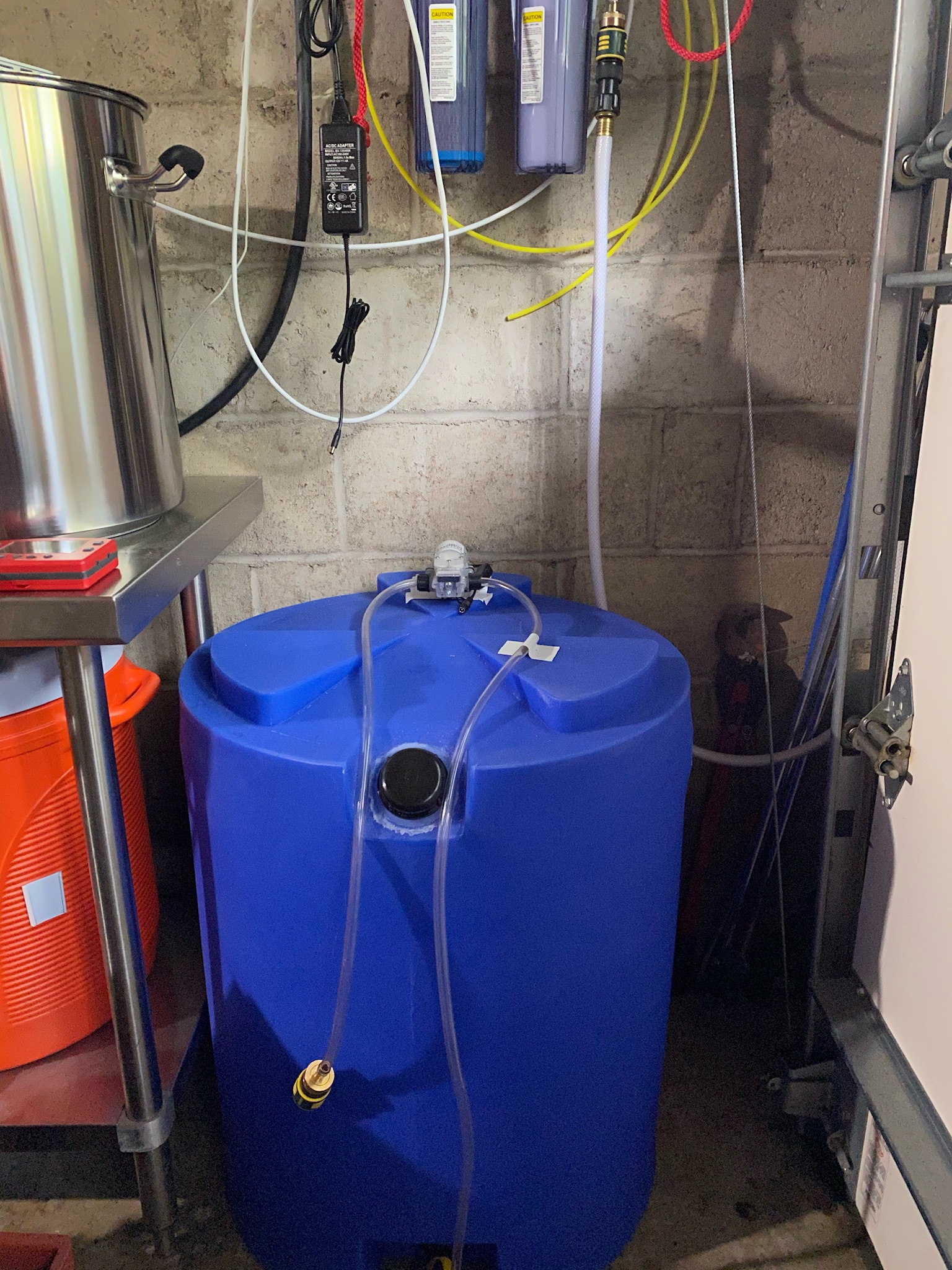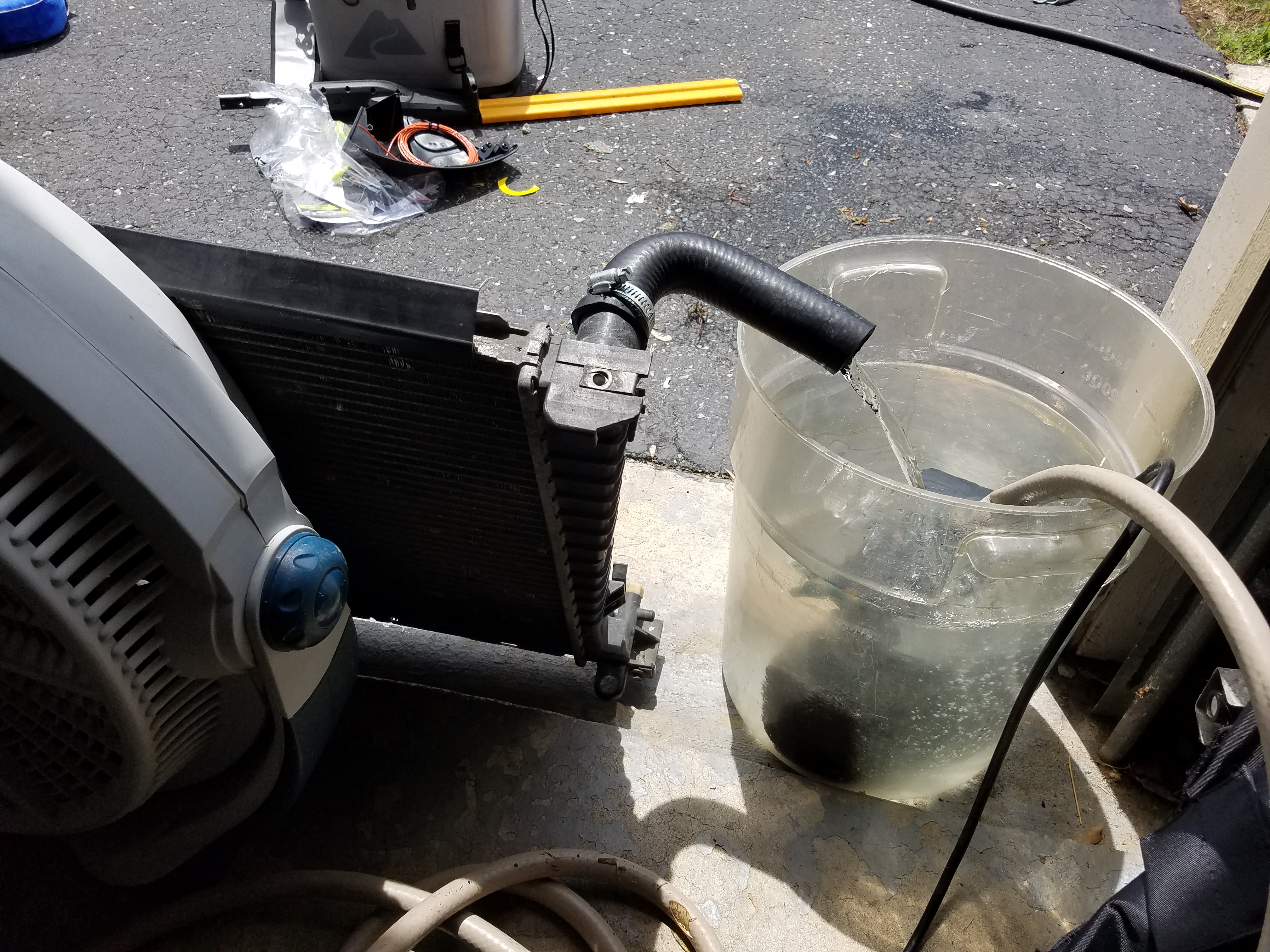I recirculate ice water in my simple cooler / pond pump / immersion chiller set up. The week before brew day I start making ice in my small chest freezer. I make 2 batches of ice cubes and 2-3 milk jug ice blocks. On brew day at the start of the 60 min boil I fill my cooler with 3-4 gallons of water and put the first 2 ice blocks in to start chilling the water. At 30 min I add the last ice block. At 15 min I add the ice cubes.
I initially pump water from my garden hose first for about 5 min through the immersion chiller to get the wort temperature down to about 160 degrees or so and just dump this water on the lawn after I have filled my cleaning buckets with hot water. Then I switch over to the ice cooler recirculation system and finish cooling to my pitching temperature which usually takes about 20 min with no further water waste.
I initially pump water from my garden hose first for about 5 min through the immersion chiller to get the wort temperature down to about 160 degrees or so and just dump this water on the lawn after I have filled my cleaning buckets with hot water. Then I switch over to the ice cooler recirculation system and finish cooling to my pitching temperature which usually takes about 20 min with no further water waste.




























![Craft A Brew - Safale S-04 Dry Yeast - Fermentis - English Ale Dry Yeast - For English and American Ales and Hard Apple Ciders - Ingredients for Home Brewing - Beer Making Supplies - [1 Pack]](https://m.media-amazon.com/images/I/41fVGNh6JfL._SL500_.jpg)
































